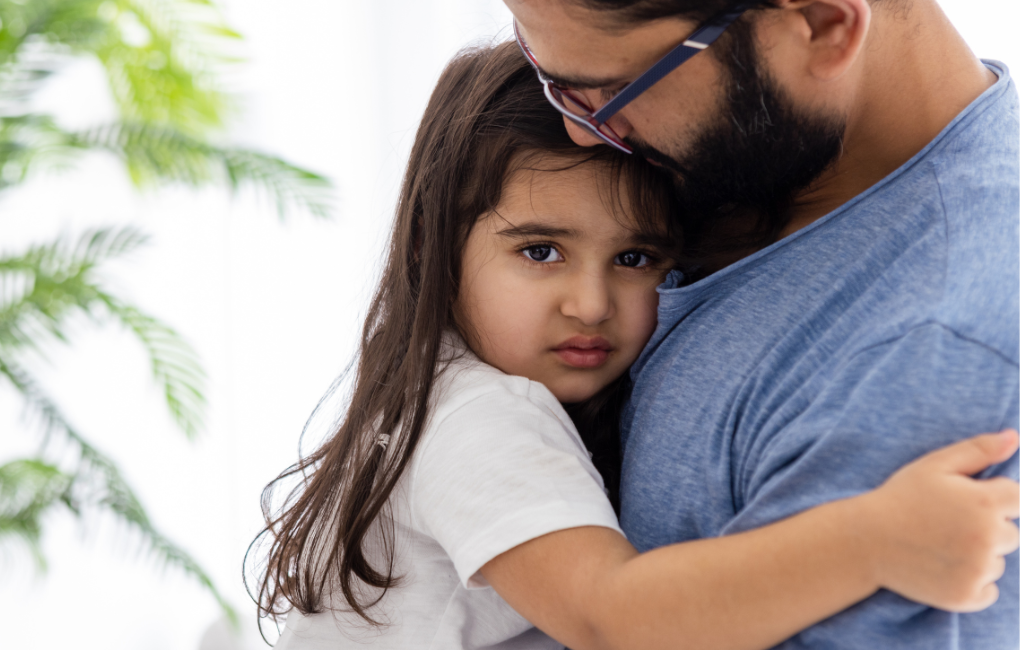
All About Anxiety (Part Two)
In part two of this series, you'll learn simple, compassionate ways to help your child navigate anxiety. It starts with curiosity, connection, and creating a safe space to grow.
Helping Our Kids With Anxiety
When we’ve taken the time to acknowledge our own emotions—especially anxiety—as a normal human experience, we’re better equipped to guide our children through theirs.
Unlike adults, children don’t have the same emotional vocabulary, reasoning skills, or internal tools. Their behavior often comes first. So as we help our kids with anxiety (or any other emotion), the process often looks like this:
Be curious about the behavior → Help name the feeling → Guide them toward healthy decisions.
1. Be Curious About the Behavior
Behavior is often the first clue that something is going on under the surface. This is especially true for younger children whose brains are still developing the ability to self-regulate and use words for emotional states.
Instead of reacting, think:
"What might this behavior be trying to tell me?"
Examples:
- “I’ve noticed you’ve been extra fidgety lately.”
- “You’re having a hard time getting along with your siblings today.”
- “You’re spending more time alone in your room—are you feeling okay?”
This shows children that we care enough to understand before correcting.
2. Help Identify the Feeling
Many children (and let’s be honest—many adults) don’t know how to name what they’re feeling in the moment. But this skill is foundational for emotional regulation. When we help our kids identify their emotions, we’re not just labeling feelings—we’re teaching emotional intelligence, which is one of the strongest predictors of lifelong well-being and relational success.
Start by offering them words to try on, without forcing a label:
· “I wonder if you feel nervous about your game. I get that way, too.”
· “I feel cranky when I don’t sleep well. Could that be part of what’s going on?”
If we create a safe, nonjudgmental space, kids are more likely to explore their feelings honestly. Even if they disagree—“No, I’m not nervous, I’m just mad!”—we’re helping them move toward emotional awareness, which is a huge win.
3. Guide Them Toward Healthy Decisions
Once a child feels understood and has a name for what they’re feeling, they’re in a much better place to choose how to respond. When kids are dysregulated—when their brains are “flooded” with emotion—they don’t need correction first; they need connection and co-regulation. That’s why guiding them after they feel safe and heard is so effective.
Offer practical options:
· “If your body feels jittery, do you want to take a walk or squeeze your fidget for a few minutes?”
· “If school feels overwhelming, let’s break your work into smaller steps together.”
With younger children, simplify it even more:
· “You’re scrunching your face. You look mad. You can sit in the cozy corner or come cuddle with me for a bit.”
We’re not just helping them manage one moment; we’re building habits of reflection, self-control, and confidence in their ability to handle big feelings. Over time, this creates emotionally resilient kids who can identify what’s going on inside and respond with wisdom.
References
¹ Shackman, A. J., & Fox, N. A. (2021). Anxiety and the Brain: Neural Circuits and Networks. Annual Review of Clinical Psychology, 17, 459-480. https://doi.org/10.1146/annurev-clinpsy-032820-122106
² Anxiety and Depression Association of America. (n.d.). Facts & Statistics. Retrieved from http://adaa.org/.
³ American Psychological Association. (2025). Definition of Anxiety. APA Dictionary of Psychology.
⁴ Anxiety and Depression Association of America. (n.d.). Child and Adolescent Anxiety. Retrieved from https://adaa.org.
Davidson, R. J., & McEwen, B. S. (2012). Social Influences on Neuroplasticity: Stress and Interventions to Promote Well-Being. Nature Neuroscience, 15(5), 689–695. https://doi.org/10.1038/nn.3093
Feist, G. J., & Barron, F. (1996). Emotional Intelligence and Success: A Meta-Analytic Review. Psychological Science, 7(6), 409–416. https://doi.org/10.1111/j.1467-9280.1996.tb00357.x.
Kabat-Zinn, J. (2005). Wherever You Go, There You Are: Mindfulness Meditation in Everyday Life. Hyperion.
The Holy Bible, New International Version. Zondervan, 2011.
Jessica Wojnarowski is a Licensed Professional Counselor (LPC) at Emerge Counseling Ministries, where she is dedicated to helping individuals and families find healing through compassionate, faith-based care. She earned her Master of Arts in Counseling from Liberty University. Jessica has been married for 20 years and is a proud mom of four, drawing on both her professional training and life experience to support and guide those she serves.

